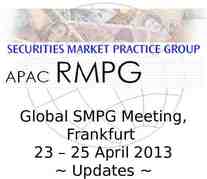ASHA Reporting Tool Entering Data into Sphintra
46 Slides4.93 MB
ASHA Reporting Tool Entering Data into Sphintra
Have your filled out paper ART form ready
Go to ART Online http://depts.washington.edu/sphsc/art.html
Click on “Log Into ART”
Login
Sphintra Menu Select “ART – SLP-Student”
In All Courses view Select “Add Course”
Select the appropriate practicum from the drop-down menu. Then click on “Proceed”
You will see a “Before you proceed” screen. Read it and decide what to do.
Once you proceed you will need to enter the appropriate data.
The clinical supervisors listed are UW supervisors. If you had an offsite practicum, select “Other”
Choose the appropriate location. Use the key below as necessary.
Choose UWSHC for practica done at the UW Speech & Hearing Clinic
If you choose “Other” as Clinical Supervisor, you must choose a UW Coordinator – the person who set up the practicum for you.
In addition, if you select “Other” as your Clinical Supervisor (this is a non-UW supervisor), you will be asked to type in the name. Type carefully please.
If you choose “Other” for Location you will also have to enter the site data.
Again, please type carefully.
Note: “Number of assignments” refers to a client or a group of clients. Example: Adult Neuro – you might work with a group and an individual – that would be “2” assignments. PSLE is “1” assignment even though you see lots of kids.
Once you enter the initial data you will be asked to enter information about your individual clients/or the group. Below is an example of a PSLE entry:
Here’s an example of a treatment practicum entry.
Client information According to the number of “assignments” you entered in the “Add Practica” screen you will fill out as many client information screens.
After entering the client information you will need to fill in the information for the “9 SLP Areas”. This screen corresponds to the front page of the paper ART form (on which supervisors provide you with feedback). Be careful with your entry here – because editing later can be time consuming.
No matter how many assignments you saw in one practicum (e.g., 552F) you will fill out only 1 of these screens.
This is what it might look like filled out for an articulation practicum.
This is what it might look like if you had 1 client with both articulation and language problems.
And this is what it might look like if you had multiple clients within one practicum. Note the # of hours has increased.
Once you’ve entered in all the data, you will be taken to a summary screen.
By clicking on “view” you will be able to see what you entered for the Client Information.
A screen will pop up that shows you what you entered. Check that it is correct.
See any errors in the summary? You can click on “edit” to make changes or delete the whole entry.
The edit options look like this:
You would select the item that you need to change. For example, you made an error in the number of hours. So you would select “Mod KASA”
Here you can select the area in which you made an error. Note: you must do each area separately (if you made errors in more than one of the “9 SLP Areas”).
Here you can make the changes:
If you need to, you can delete the whole entry and start again. Sometimes that’s the easiest thing to do.
Once you are all done you can see how many hours you have accumulated. These are “unverified hours.”
Anything with the status “new” or “error” is unverified. In order for the hours to count, they must be verified.
In order to get your hours verified you must select “Quarterly notification of supervisors ”
You’ll see this “warning” screen. Read it carefully.
Once you click on it you will see this screen.
And then you will be taken back to this screen. Remember the hours you see on this screen. To see a report of verified practica– click on “Reports.”
Here you see the hours are different. That’s means that there are many practica to be verified. You need to stay on top of this.
You’ll also see information broken down by the “9 SLP Areas.”
This Report is Important It is what you will use at the end of your program to demonstrate all your accumulated, verified clock hours. You will print this out and submit it to the Program Director so that s/he can sign off on your paperwork that you will send to ASHA.
Need to make a change for a verified entry? You must ask the verifying supervisor to “unverify” the entry (the supervisor will select “error”). After that you will be able to make changes. Be sure to let the supervisor know that s/he needs to verify the entry again.
Problems with ART? Start with your supervisor. Most of the time s/he can help. If you are still stuck – ask Dr. Sargent for help.



















































